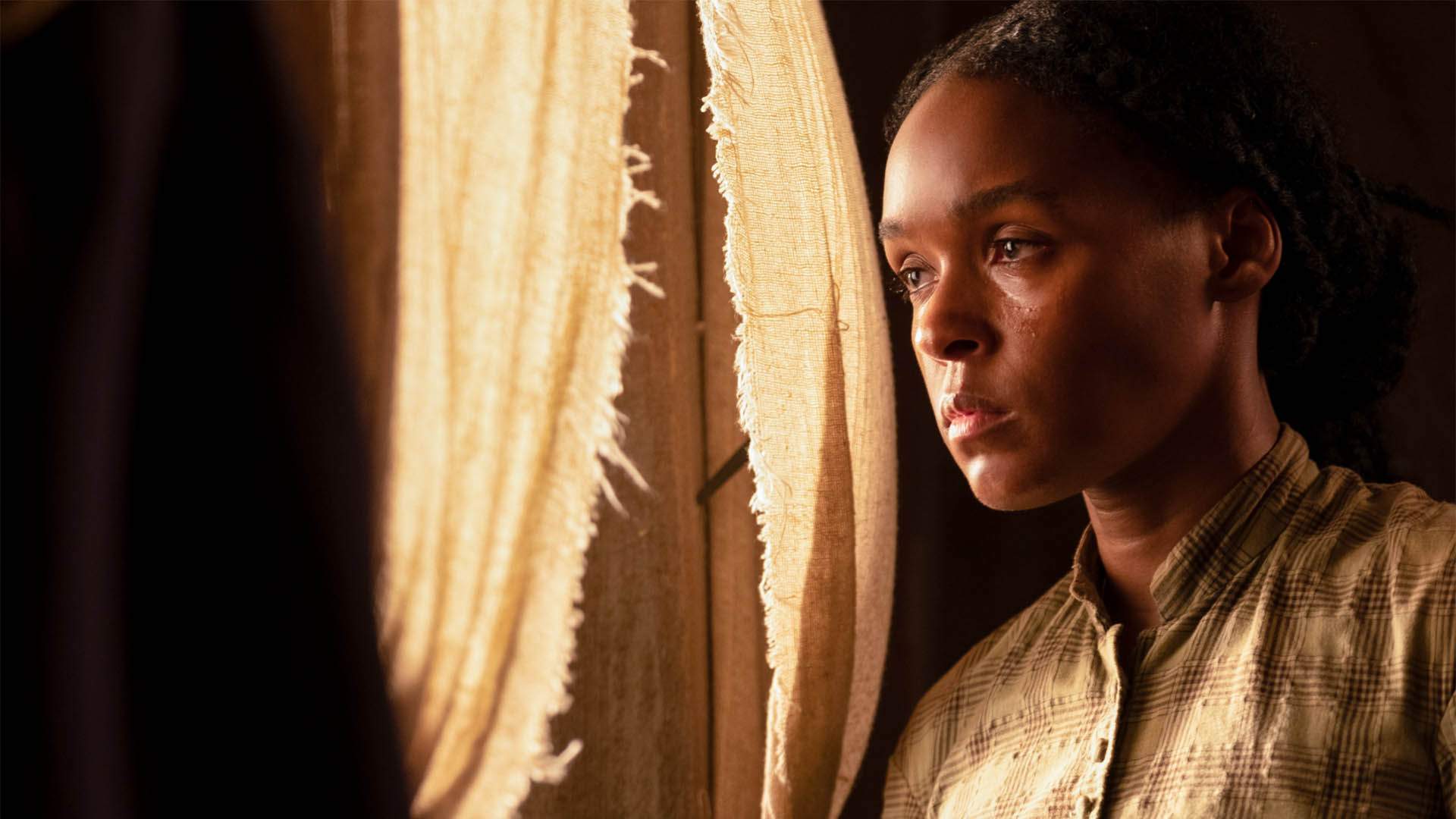Antebellum
Despite Janelle Monáe's best efforts, this horror film about US race relations resembles M Night Shyamalan's lesser works more than Jordan Peele's 'Get Out' or 'Us'.
Overview
Antebellum opens with a sprawling, roving and weaving single-take shot that's designed to garner attention from the get-go. Constantly roaming — and saturated with both sunlight and colour, in case you aren't instantly glued to its vivid sights — it surveys a stereotypical-looking plantation in America's south. This is where resident belle Elizabeth (Jena Malone) lives. A troop of Confederate soldiers under the leadership of Captain Jasper (Jack Huston) also call it home, too. And when the latter aren't in combat, they join Elizabeth in imposing their might on the property's other residents: its enslaved Black workers.
Watching this conspicuously eye-catching introduction, it helps to know what Antebellum's title actually means. The term refers to a time before a war, and is typically used in relation to the American Civil War — but, in the movie's first sequence, it certainly seems as if that historical conflict is raging away. Indeed, that'd explain the soldiers' presence, as well as the cruelty and brutality meted out to the plantation's slaves for daring to speak while picking cotton, refusing to acquiesce to every single order or trying to escape. First-time writer-directors Gerard Bush and Christopher Renz haven't chosen Antebellum's moniker by accident, though, and that clash between the word's definition and the sights seen on-screen is crucial to their movie.
Yes, Antebellum hinges on a twist, endeavouring to use the horror genre to explore US race relations in the manner that Jordan Peele has recently perfected. Alas, this copy-cat flick consistently proves far less surprising, powerful and clever than it thinks it is. Here's the setup: attempted runaway Eden (Janelle Monáe) is one of the property's enslaved workers, and subject not just to beatings, brandings and forced labour, but also raped regularly by the general (Eric Lange) who has claimed her as his own. She's planning another escape; however, thoroughly unexpectedly given the surroundings, a mobile phone suddenly rings. Now Monáe's character is called Veronica Henley, and she's a well-known activist and author. Also, everything about her life — including the conference in New Orleans she attends, meeting up with her outspoken best friend Dawn (Gabourey Sidibe) while she's there — is firmly set in the 21st century.
Obviously, how Monáe's dual roles intertwine is best discovered by watching, as is the reappearance of Too Old to Die Young's Malone as a modern-day caller for Veronica. But even if you'd hardly call yourself a horror or thriller fan, or even just a movie buff, the big shift here isn't hard to guess. Bush and Renz rely so heavily on their one twist that the film resembles M Night Shyamalan's more forgettable works more than Get Out, Us or TV series Lovecraft Country, and suffers noticeably as a result. Their aim is undeniably bold, smart and timely, unpacking systemic racism by not only looking at how Black Americans have been treated both in the present and in the country's history, but by finding a way to firmly, unmistakably connect the two. And yet, Antebellum feels more like an exercise in making a provocative genre film than a feature that actually says something substantial about engrained prejudice in the US — a topic that sadly continues to remain relevant, but is treated here as stock-standard horror fodder.
Take the movie's always-lurid, often-violent imagery as an example. Visually, Antebellum isn't easily forgotten, but its parade of grim frames is a double-edge sword. On the one hand, it reinforces how horrific the idea of slavery is, and shows the audience exactly why in graphic detail. Of course, viewers already know this, even without such heavy-handed reminder. Accordingly, Bush and Renz seem to revel in startling sights almost for the sake of it. If its main victim didn't seem so much like a symbol — more than a fleshed-out character, that's for sure — Antebellum might've succeeded in getting viewers to stare unflinchingly at her pain, experiencing it with her like Australian standout The Nightingale did so expertly, but it really just appears to put her through the wringer to evoke shocks rather than emotion.
Most of Antebellum's cast are only asked to fit a specific type, too, as Malone, Huston and Lange all demonstrate. In fact, although Kiersey Clemons (Hearts Beat Loud) pops up as a new arrival at the plantation and Tongayi Chirisa (iZombie) also features among the property's fellow captives, the film tasks them with little more than being present and distraught. The exception is Monáe, with the Moonlight and Hidden Figures star turning in a masterly performance. That's a credit to the musician-turned-actor and her all-round excellence more than the material, though. And if everything around her didn't feel so formulaic and calculating, this'd be a far better film — rather than just an ambitious one that mistakes jumping on a bandwagon for actually making a meaningful statement.
Antebellum is screening as part of the Terror-Fi Film Festival from 28 October to 15 November, 2020. The feature is due to hit streaming services from 6 January, 2021.





